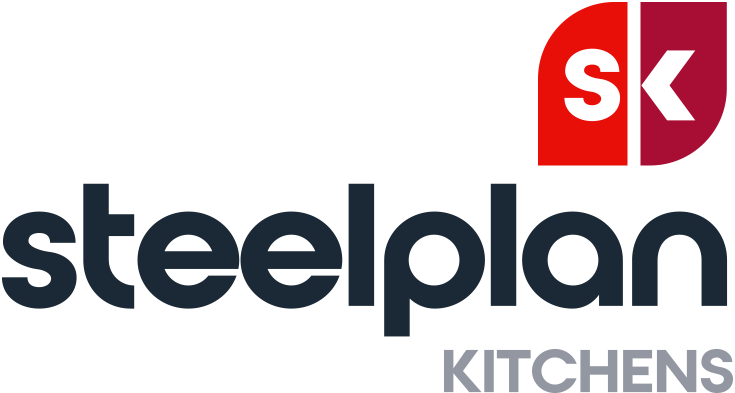If you manage a community centre or place of worship, you know how important a kitchen is for bringing people together. Whether its preparing teas and biscuits for your regular visitors, or catering for show-stopping events, you know the power of food to bring people together.
That’s why, if you are considering refreshing or upgrading your community centre kitchen, you want to make cooking as seamless, quick and accessible as possible; and one of the important choices you will have is to choose between electric induction hobs and gas stoves.
With Steelplan, you can leave the design and planning of your dream kitchen to experts to help make that choice easy. However, it’s still important for you to know the facts as your community centre’s needs are unique. So, without further ado…
A quick reminder – gas stoves and induction hobs
Before we review the benefits for your community centre, here’s a quick reminder of the two hobs we are comparing:
- Gas hobs are those which feature burners that prepare food over an open flame, and will have a control ‘knob’ to control the intensity of the flame.
- Induction hobs are the ‘flatter’ glass design with rings on which to put your pots and pans, and no flame: electricity passed through copper coils beneath the surface produces the magnetic field that heats up the cooking vessel directly.
Both have plenty of advantages – and certain limitations. However, let’s review the benefits of each with a particular focus on how they might help you in your community centre kitchen.
What are the benefits of induction hobs for a community centre kitchen?:
- They are faster to heat up – this makes them better when you need to use them quickly, such as for boiling liquid, or save time during a cooking class.
- They are more energy-efficient – induction wastes less heat than a naked flame, so it is the more sustainable choice of the two.
- They are safer – induction works when you place a cooking pan on top of it, and automatically stops heating when there’s nothing on it. This is important if you are teaching inexperienced or vulnerable cooks. Equally, gas hobs can also contribute to poor indoor air quality without adequate ventilation.
- Easy to clean – rather than cleaning between the ‘rest’ and the hob itself, wiping over with a cloth and antibacterial glass cleaner is sufficient.
- Aesthetically pleasing – induction hobs have a modern glass ‘look’ that fits seamlessly within an updated semi-commercial kitchen design.
What are the benefits of gas cookers for a community centre kitchen?
- They are convenient – this is especially true if you have an existing gas line into your kitchen and want to keep your existing cooker(s).
- They offer more responsive heat control – you can change the power of the burner to a very fine degree, as opposed to induction hobs. This is perfect for precision cooking.
- They work with more cookware – induction hobs require specific induction-friendly cookware, whereas gas does not. Replacing your current cooking vessels with high-quality cookware in the quantities your community centre may need can be expensive.
- They are more traditional – not to be underestimated, this is one benefit if your community needs a means of preparing food or drink over an open flame, such as traditional South Asian teas.
Before we come down on the final verdict, there’s one important question left to ask…
Are induction hobs cheaper to run than gas hobs?
While induction hobs are more energy-efficient than gas hobs, how cheap they are to run depends on the cost of your electricity versus the cost of your gas.
For most community centres and church halls – just like most homes – it will be cheaper to run gas, as gas costs less than electricity.
At the time of writing, electricity rates for most homes and businesses are roughly 3x higher than gas prices. The only time this may not be true is in more specific cases where your electricity rates are far lower, such as with solar power or other renewable sources of electricity.
So, with all of this in mind, should your community centre choose induction or gas hobs?
Should my community kitchen use gas or induction hobs?
The choice depends entirely on your community centre kitchen’s needs, and what your community will want.
If you are running cooking classes that require safer cooking methods for less-experienced individuals, quicker cooking for large events, or you have an energy-efficiency goal in your community hub, induction hobs are good practical choices.
On the other hand, if your first priority is keeping costs down, or you have a strong community need for open-top flame cooking, you will be well-suited to cooking with gas…
Of course, you don’t always have to choose between one or the other: you can have a dual induction and gas stove set-up which gives you the best of both worlds.
That’s exactly what this Birmingham community centre did to modernise its kitchen, whilst also giving its South Asian community groups a traditional means to make tea.
Need a community centre kitchen upgrade? Leave it to Steelplan
We hope that this has helped you clear up the pros and cons of induction and gas hobs for your community centre. As you already know, there’s far more to the issue than just price.
You make decisions for the benefit of your community: that’s one of the reasons you might be thinking about refreshing your kitchen to put on exciting events, and provide a better service to your visitors.
If you are embarking on that process, choosing a partner like Steelplan, who have decades of experience helping community centres and places of worship transform their kitchens, will take away the stress. We are the only semi-commercial kitchen provider with a bespoke design and consultation process that lets you see what your kitchen will look like before you even install it, entirely free, with no obligation. Why not reach out and let us design your new dream kitchen for your community centre? Just contact us here or call 020 8254 0090.





